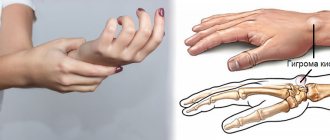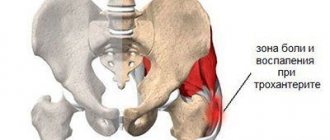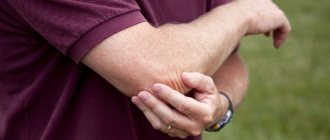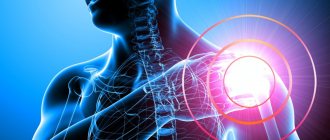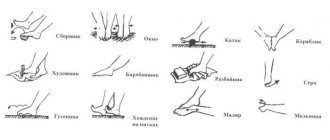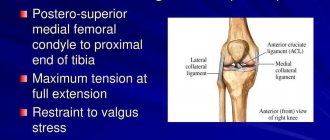The shoulder joint is one of the largest and most complex joints in the human body. Its structure, location, as well as the constant loads to which it is subjected lead to the fact that various pathologies often arise in this place. The shoulder joint suffers from damage to surrounding muscles and ligaments, destruction of cartilage tissue, inflammation or pinched nerves. Moreover, in addition to pain, symptoms of such pathologies can be limited movement.
Many people begin to notice that their arm does not rise in the shoulder joint. This can happen for a variety of reasons: due to inflammatory or degenerative diseases, infections, salt deposits or damage to joint components. Quite often this condition is caused by a bruised shoulder due to a fall or awkward movement. To prevent serious dysfunction of the joint, it is necessary to provide the victim with first aid correctly and consult a doctor. Urgent examination is required if some time has passed after the injury and the arm has stopped lifting. This means that post-traumatic complications have developed.
General characteristics of the problem
The most unique joint in the human body is the shoulder joint. It is formed by the connection of three bones and can perform many different movements. This joint is involved in all movements of the arm and can withstand heavy loads. Therefore, he is vulnerable to various pathologies.
Impaired functions of the shoulder joint can be caused by sudden movement, monotonous unusual loads, or injury. This can damage both the joint itself and the tissues surrounding it. An inflammatory or degenerative process occurs, which leads to discomfort and limitation of movement. In this case, a person may notice that his arm does not rise in the shoulder joint.
This condition can be caused by severe pain or damage to joint components. Depending on the pathology, different disorders occur. For example, with glenohumeral periarthritis, the arm does not rise up through the side, but it can be freely raised forward. With arthrosis or salt deposition, all movements in the joint are difficult and a crunching sound can be heard. Sometimes so-called “referred” pain also occurs, when it is impossible to raise your arm due to pain in the heart, lungs or liver.
Athletes, as well as people who perform heavy physical work with their hands or frequently lift heavy objects, are most susceptible to this pathology. But those who lead a sedentary lifestyle may also suffer from shoulder dysfunction. After all, their weak muscle corset cannot properly stabilize the joint. As a result, various injuries occur more often: bruises, sprains, shoulder dislocations, bone fractures. It is these types of injuries that in most cases cause pain and impaired joint mobility. Moreover, the arm may not stop lifting immediately, but some time after the injury.
Shoulder joint mobility may be impaired due to inflammatory or degenerative processes
Provoking factors ↑
Based on the above causes of pain, several provoking factors can be deduced.
- First of all, pain in the shoulder area is caused by lifting excessively heavy objects. This applies to both sports equipment and cargo. Therefore, you should avoid placing heavy loads on your shoulder region, or at least try to lift the load with smooth movements.
- The second factor is shoulder injuries. Any fall or blow to the shoulder can cause a serious shoulder dislocation.
- And the third is incorrect position during sleep. You should be careful about where your shoulder lies when you go to sleep. You also need to pay attention to the pillow and mattress you sleep on.
Causes
In order to quickly restore shoulder mobility and prevent the development of complications, it is necessary to begin treatment in a timely manner. But to do this, you first need to find out why the hand stopped raising. This most often happens due to severe pain that prevents a person from moving his shoulder. But impaired joint mobility can occur due to damage to muscles, ligaments or articular cartilage.
The most common cause of shoulder mobility impairment is injury. It can cause ligaments to tear or damage to joint components. Sometimes the arm also does not rise due to severe pain, which appears when nerve endings are pinched or due to inflammation. The second common cause of limited movement in the shoulder joint is considered to be glenohumeral periarthritis. This is an inflammatory disease that affects the joint capsule and holds its ligaments.
Acute pain, intensifying when moving the arm up, can also occur with other diseases:
- advanced osteochondrosis of the cervical spine;
- herniated intervertebral discs;
- arthritis;
- osteoarthritis;
- neuritis of the brachial nerve;
- tendobursitis;
- deformation of the rotator cuff of the shoulder joint.
In addition, there are pathologies in which the arm stops raising not because of pain. This usually happens with a severe shoulder injury, fracture, ligament rupture, or myositis. Degenerative processes in the joint can also cause it to become blocked. In addition to the last stages of arthritis and arthrosis, this can happen with capsulitis and frozen shoulder syndrome. With some pathologies, as well as in old age, salt deposition in the joint may begin. As a result, movement in it is difficult, the ligaments become calcified and cannot work normally. Therefore, the hand does not rise above 45 degrees.
If you experience severe shoulder pain when raising your arm, you can relieve it with anti-inflammatory ointments
Structure of the shoulder joint ↑
The shoulder joint is the connecting link between the shoulder blade and the upper arm bone.
The upper part of the humerus, through which the connection occurs, is spherical in shape, and the composite socket of the scapula, which connects to the humerus, is a small depression.
This “dip” softens the level of friction on the humerus during movement. It also provides protection against damage due to sudden movements of the hand.
The joint capsule of the shoulder is attached to the bony base of the scapula.
The shoulder joint and scapula are connected by a dense bundle of threads with nerve endings.
Because of this, unexpected pain often appears with sudden movements.
But in general, the joint has practically no threads with nerve endings and is articulated with other organs of the limb using muscles.
Thanks to this circumstance, the movements of the arm may not be constrained, but on the other hand, this structure of the shoulder joint is the most common cause of dislocations and injuries to the arm.
Features of treatment
The shoulder joint is very complex, so self-medication is unacceptable. Even minor injuries can cause serious complications. If a person only relieves pain without eliminating its cause, the pathology can progress, leading to a complete loss of joint function. Therefore, treatment should be prescribed by a doctor after examining and determining the source of the problem.
In case of injury, the prognosis for recovery greatly depends on whether first aid was provided correctly. But in all other cases, it is also very important that therapy is started on time. In this case, it is imperative to use comprehensive treatment aimed not only at relieving pain and inflammation, but also at restoring joint mobility.
The first step, which is mandatory in all cases where the mobility of the shoulder joint is impaired, should be its immobilization. After all, if the arm does not rise, it means that an inflammatory process is developing in the shoulder or nearby, swelling has occurred, muscles or ligaments are damaged. Immobilization helps damaged tissues recover faster. To fix the shoulder, you can use an elastic bandage, a scarf bandage or a special orthopedic bandage. They need to be worn from several days to 2-3 weeks, depending on the severity of the pathology.
To prevent pain and dysfunction of the joint, it is recommended to wear a special orthopedic bandage after an injury.
The second common method used in all cases where pain interferes with raising the arm is drug therapy. Most often these are non-steroidal anti-inflammatory drugs in tablets or injections. For acute pain, joint blockade with anesthetics is sometimes required. Glucocorticoids are effective for pain and inflammation, but if joint mobility is impaired, it is best not to use them as they may worsen the problem.
An intra-articular injection will help you move your arm for a while without pain.
Other methods are selected depending on the characteristics of the problem and the severity of the joint damage. If the arm does not rise up, it is better to treat this condition comprehensively.
Related article: Treatment of glenohumeral periarthritis
- For chronic joint pathologies, as well as at the stage of rehabilitation after injuries, physiotherapeutic procedures are often used. Laser therapy, UHF or magnetic therapy are good at restoring joint function.
- For arthrosis and salt deposition, compresses with Dimexide or Bischofite are effective.
- Hirudotherapy helps well with the accumulation of fluid in the joint or with circulatory problems.
- Massage effectively restores blood circulation and nutrition to all tissues of the shoulder. In addition to the classical method, acupressure and acupuncture are used. These methods can stimulate self-healing mechanisms.
- Postisometric relaxation is a manual method consisting of alternately tensing and relaxing muscles, combined with massage. Helps relieve muscle spasms and restore elasticity to ligaments.
- For any joint pathologies, physical therapy is always prescribed. Only with the help of special exercises can mobility be restored to the shoulder.
- Traditional methods are often used as adjuvant therapy.
The choice of treatment methods should be made by a doctor after examination. You need to know the cause of the pathology, otherwise you can only worsen your situation. For example, immediately after an injury or in the presence of severe swelling, warm compresses and thermal procedures should not be used. And if the nerve roots are damaged, a pressure bandage is contraindicated.
First aid
If a person falls on his arm or injures his shoulder in any other way, it is necessary to provide him with first aid as soon as possible. The first thing to do is immobilize the joint. This will help prevent increased pain and injury to soft tissue from damaged bones. Then it is important to relieve the pain and transport the victim to a medical facility. It is also recommended to apply cold to the damaged area - this will help prevent swelling.
For immobilization, you can use an elastic bandage or any available means. But you cannot set a joint yourself when it is dislocated, or move it if it causes pain. It is best to fix the arm pressed to the body, but in some cases the victim himself takes a position in which it is easier for him. For minor injuries, a scarf bandage is sufficient; if there is an open wound, you need to apply a sterile bandage, and in case of bleeding, a pressure bandage or tourniquet above the injury site.
Sometimes people around you don't know what to do when someone is injured. Then it is better to ensure the victim’s immobility and quickly deliver to the doctor. In case of severe pain, it is important to alleviate the suffering - give a painkiller tablet.
It is very important to immobilize the joint immediately after an injury; this can be done using improvised means.
Possible nature of pain ↑
- Severe - caused by several reasons: shoulder injury, pinched nerve endings (this happens with an intervertebral hernia) and acute inflammation of the muscle tendons.
- Aching - indicates serious disturbances in the functioning of the body. Continuous aching pain can be a sign of coronary heart disease, angina pectoris and other ailments.
- Acute - most often a sign of damage to the joints due to improper lifting of weights.
- Acute - caused by infectious processes occurring in the nerve endings of the joints. It can also appear due to excessive stress.
- Permanent - indicates a serious bruise of the joint, in which the humerus is damaged.
- Pulsating - indicates overstrain of the muscles of the shoulder girdle, which have lost their tone due to injury.
- Dullness is a sign of tendinitis.
- Burning - caused by an inflammatory disease, for example, osteochondrosis.
- Prolonged - indicates that the bone of the shoulder joint is not only dislocated, but also seriously damaged by the impact.
Drug treatment
Treatment of any joint pathologies begins with non-steroidal anti-inflammatory drugs. These may be Ibuprofen, Diclofenac, Nimesulide, Meloxicam, Ketoprofen. In mild cases, a course of such tablets is sufficient. For severe pain, glucocorticoids may be prescribed - Prednisolone or Hydrocortisone.
But they cannot be taken for longer than 5-7 days, so treatment is supplemented with ointments based on these agents. Butadione, Voltaren, Dolgit, Nise relieve pain and inflammation well. Some time after the injury, as well as after the inflammatory process has subsided, warming ointments are useful: Viprosal, Capsicam, Apizartron and other preparations based on snake or bee venom, pepper, methyl salicylate.
Additionally, if shoulder mobility is impaired, it is useful to use chondroprotectors. They help restore the cartilage tissue of the joint, returning it to its functions. Preparations based on chondroitin and glucosamine are available in tablets and ointments. Other drugs may also be prescribed as adjuvant treatment. Angioprotectors will help normalize blood circulation, antispasmodics or muscle relaxants will relieve muscle spasms.
Special exercises will help restore mobility of the shoulder joint
Diagnostic methods ↑
It is important not to miss the onset of a muscle ailment, and if unpleasant symptoms appear, urgently consult a traumatologist.
The following procedures may be offered to you:
- X-ray diagnostics - involves the use of x-rays to determine the degree of change in cartilage tissue in the joints. An x-ray will also reveal the presence of bruises and damage to the bone of the shoulder joint.
- MRI (magnetic resonance imaging) - allows for a wide examination of the shoulder. MRI results are highly informative, which makes it possible to easily identify ailments such as arthritis, osteoarthritis, and painful diseases in the shoulder area.
- CT (computed tomography) is a painless scan of the shoulder joint, which helps determine whether pain in the shoulder area is caused by an inflammatory, dystrophic or degenerative process.
These are the most used methods in modern medicine and are used when examining the shoulder joint.
Physiotherapy
After relieving acute pain and inflammation, gymnastics is mandatory. Exercises are selected by the doctor individually. It is advisable to exercise regularly, even several times a day.
This is the only way to restore the function of the joint. You can use the following exercises for this:
- place the painful hand with the palm on the opposite shoulder, with the other hand grab the elbow and smoothly lift it up, without lifting it from the chest;
- clasp your hands in front of you, slowly raise them;
- do the same, moving your arms back;
- put your hands on your waist, move your shoulders forward and then back;
- from the same starting position, perform rotational movements in the shoulder joints;
- place the sore hand behind your back, grab it with your healthy hand and slowly pull it to the side until pain appears;
- lie on your back, move your straight arm to the side and lift it up a few centimeters, holding in this position for 10-15 seconds;
- take a large ball with both hands and throw it forward and up.
How to treat? ↑
Treatment for sudden onset pain in the shoulder joint depends on the causes of its occurrence.
By identifying the root cause of your unpleasant illness, you will have a better chance of a quick recovery.
How to relieve pain?
Of course, when unpleasant symptoms occur, a person strives to relieve painful sensations in various ways.
This can only be done if you know what disease is bothering you:
- If you happen to get a bruise or damage to the bone of the shoulder joint, or tear ligaments, then ice will help you. It must be applied to the affected area.
- Pain during periarthritis can be relieved with the help of analgesics and anti-inflammatory drugs, since this disease is characterized by the presence of an inflammatory process. Also, injections of novocaine into the affected area help relieve pain during periarthritis.
- As modern medicine knows, arthritis cannot be cured, but the pain it brings can be controlled with the help of a whole range of drugs. Medicines, like no other remedy, help to calm the incessant pain. Most often, doctors prescribe painkillers so that the patient does not suffer from the pain that haunts him.
- Ointment is also an effective tool in the pursuit of healthy joints. So, you can prepare an ointment to treat shoulder joint diseases at home. To do this you will need 100 grams of unsalted lard, a pod of red pepper and 3 tablespoons of St. John's wort. The lard needs to be melted and the rest of the ingredients added. This ointment will help stop the unpleasant symptoms of various diseases of the shoulder joint.
Read also…. Aching or sharp pain in the back above the lower back
Remember that relieving pain is not getting rid of the disease.
In order to prevent unpleasant symptoms from returning, it is necessary to eliminate the source of pain - this can only be done by visiting a doctor.
Which doctor treats such pain?
First of all, consult a general practitioner.
Another doctor who will help you cure the disease is a traumatologist.
He specializes in the diagnosis and treatment of diseases of the musculoskeletal system, including the shoulder region.
Folk remedies
Alcohol tincture
Thus, alcohol tincture is very effective in suppressing pain in the shoulder joint.
It is made as follows: add 3 tablespoons of fresh lilac flowers, 3 pods of red pepper, and 1 tablespoon of burdock root to 1 liter of alcohol.
After the product has been infused in a cool and dark place for three days, you can rub it on your shoulder.
Vinegar compresses
Another, no less effective, method is vinegar compresses.
One tablespoon of vinegar should be diluted in water (half a liter). Next, you need to moisten a piece of cloth with this solution and apply it to the sore spot (shoulder).
Drug treatment
The choice of drug for treatment depends on how severe the patient’s condition is and how much the disease has progressed.
In this case the following applies:
- non-steroidal anti-inflammatory drugs: Ibuprofen, Ketanov, Diclofenac;
- drugs containing glucocorticosteroid hormones - Hydrocortisone and Prednisolone.
Exercises
Undoubtedly, systematic gymnastics will help get rid of shoulder pain.
According to most doctors, the following exercises should be performed during treatment:
- Starting position: sitting. The hands are on the shoulders. You need to perform rotational movements back and forth, 1 minute on each side.
- You need to throw your right hand behind your back and clasp with your left hand. You need to stretch your arms for 10 minutes. Repeat the same with your left hand.
- Starting position: sitting on a chair. Place your hands on your waist and move your elbows forward and back without lifting your hands from your body.
These exercises will be life-saving in case of severe pain.
Video: exercises
Folk remedies
A condition where it is painful to raise the arm in the shoulder joint is quite common. This can happen to anyone. Many people try to cope with the problem with home remedies. Moreover, folk medicine has accumulated considerable experience in combating joint pathologies.
But before you start using such drugs, you should still consult your doctor. After all, not all methods are equally effective. But if you choose the right prescription and use it in conjunction with the treatment prescribed by your doctor, it will be easier to restore joint function. When shoulder mobility is impaired, compresses, medicinal baths, and ingestion of agents that improve metabolic processes and promote the removal of salts are popular.
- To rub a sore shoulder, you can use a tincture of fresh lilac flowers. You need to add 5 teaspoons of flowers, a tablespoon of chopped burdock root and red capsicum to 500 ml of alcohol. After infusion for 4-7 days, the tincture is ready.
- A homemade lard-based ointment will help relieve chronic pain and impaired joint mobility. For 200 g you need to take 6 teaspoons of chopped cinquefoil and St. John's wort and 2 tablespoons of dry chili pepper.
- A warming compress made from honey and mustard is effective. You need to mix liquid honey and olive oil in equal parts, add half the amount of dry mustard. Warm it up a little in a water bath and apply it to the joint for 30 minutes.
- For any joint pathologies, it is recommended to take pine baths. For them, you can use a ready-made extract or prepare a decoction of pine cones and needles.
- If there are degenerative processes in the joint or salt deposits, the following compress is effective: beat the yolk, add 2 teaspoons of melted butter and apple cider vinegar, a teaspoon of honey and a little salt.
- If shoulder mobility is impaired, it is recommended to lubricate the joint as often as possible with vegetable oil infused with burdock root. For 200 ml you need 75 g of fresh crushed raw materials.
When the hand is no longer understood, it greatly reduces a person’s quality of life. Therefore, it is very important to treat all joint pathologies in a timely manner and correctly provide first aid for injuries. This will help prevent serious complications and maintain shoulder function.

